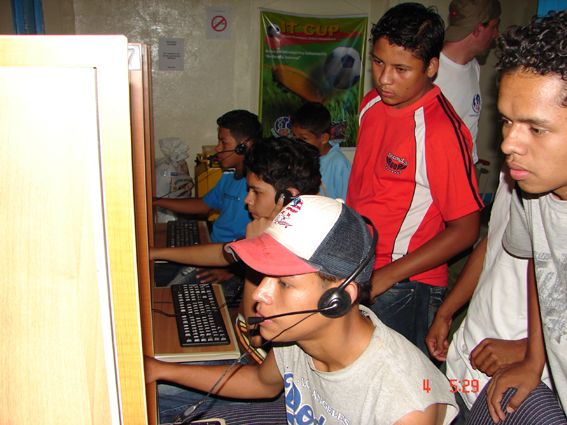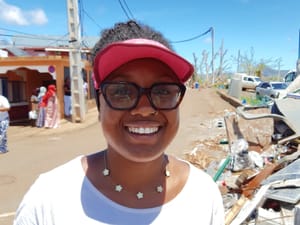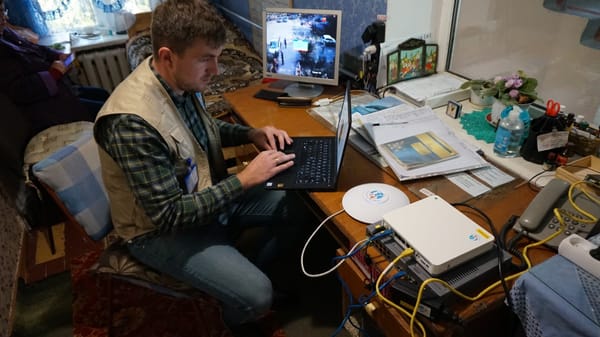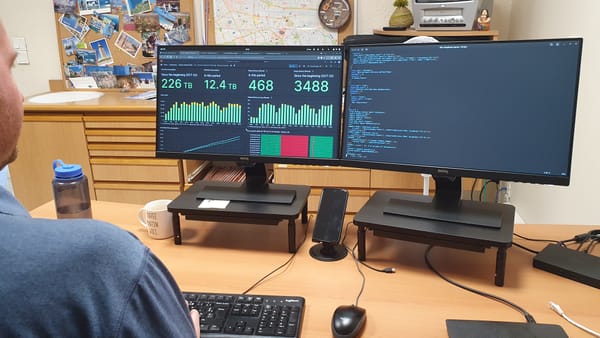There’s no denying that the Internet has become a crucial part of our daily lives, connecting us to people, services, and information globally on a scale that was unfathomable 30 years ago. The simple fact that you’re reading this article now is testament to its power.
However, according to the United Nations, a third of the world's population still lacks access to the internet, with the vast majority of these people living in countries from the Global South where the digital divide is a significant barrier to their economic, social, and educational development.
Fortunately, advances in satellite technology have now made it possible to provide internet access to remote and low-income regions. One of the most promising solutions is Eutelsat's Konnect satellite technology. But how exactly can this technology help bridge the digital divide?
The Importance of Internet Access for the Global South
For those living in remote low to middle-income countries, the Internet not only means simply having access to news and information thus staying informed about local and global events, but also being able to connect with others and have the ability to access new economic opportunities.
For instance, school classes could be delivered remotely, giving children in remote areas access to education they have hitherto missed. Telemedicine opened new possibilities for healthcare, especially since its expansion with COVID-19. Then there’s the fact that the internet allows for e-commerce, enabling small businesses to reach a wider customer base and grow their business. In short, access to the internet can help lift people out of poverty, and ultimately lead to greater prosperity for these countries. Without it, they risk being left behind in the global economy and unable to take advantage of the benefits that connectivity brings.
The cost of broadband: Cheap to those who can afford it, expensive to those who can’t
One of the major areas of concerns that the 2022 International Telecommunication Union (ITU) report identified is that the cost of broadband subscriptions still remains too high for the vast majority of people. Although high-income countries are seeing the price of subscriptions drop thanks to competition in the broadband marketplace, “the majority of low- and middle-income economies still fall short of the global affordability target of 2% or less of gross national income per capita set by the Broadband Commission for Sustainable Development.”
One way this is being addressed is through the ITU’s Partner2Connect (P2C) Digital Coalition where (as of December 2022), “582 pledges, worth approximately USD 30 billion, from 281 entities in 118 countries were submitted to P2C”.
One of those entities is Eutelsat’s Konnect. As of November 2022, they have extended Internet access to 200,000 people “living in remote, rural, and unserved areas of sub-Saharan Africa where terrestrial networks cannot reach” as part of their pledge to the ITU to connect at least one million people within 5 years.
It should be pointed out that satellite technology is in some circumstances no less expensive than broadband (and often more), but where it can make a difference is the possibility to establish WIFI hotspots in villages in hard to reach areas. For instance, Eutelsat’s Konnect has connected more than 800 villages across the DRC and Ivory Coast, allowing thousands of people to get online.
The Challenge of Providing Internet Access to Remote Low-to-Middle Income economies
Besides the cost of broadband subscriptions, there are also other challenges to take into account. For instance, many remote and low-income regions lack the necessary funds to develop the infrastructure to support internet connectivity, such as power grids, fiber optic cables, and cell towers. There are also geographical challenges for those countries based in mountainous regions, jungles, and deserts. So how do we get around these challenges?
How Satellite Technology Can Bridge the Digital Divide
This is where satellite technology can help. First off, satellite technology can provide widespread internet coverage to even the most remote low-to-middle income countries – thus tackling the geographical challenges. It’s also relatively quick to deploy, making it a cost effective solution where building the infrastructure would be too expensive.
The downsides is that it can still be expensive to deploy and maintain, making it still unaffordable for many. And finally, there’s the weather. Adverse weather conditions (high winds, sunspots, storms) can cause interruptions in the service making it unreliable to some.
Eutelsat's Konnect Solution
Established in 2018, Konnect is Eutelsat's satellite broadband initiative. It aims to deliver easy, affordable and fast internet. Operational in over 40 countries across sub saharan Africa, Europe and Russia, it has created a range of services and packages to provide Internet connectivity, even in areas not covered by any other technology or where terrestrial networks cannot reach.
What sets Konnect apart from other satellite internet solutions is its speed. It’s seriously fast - reaching speeds of between 50 and 100 Mbps. And if you think that’s impressive, later this year, they are putting into service their recently launched next-generation VHTS (Very High Throughput Satellite) satellite system which will increase the global capacity of Konnect services.
TSF have been partners with Eutelsat for many years - almost 16. And we’ve seen firsthand how Konnect has helped people in need in hard to reach areas when we worked alongside Eutelsat in Madagascar in 2022 after Cyclones Batsirai and Emnati hit the East coast with winds up to 235 km/h and to provide emergency connectivity.
In conclusion, the digital divide is a significant challenge that needs to be addressed to ensure that everyone has access to the opportunities that the internet provides. While the cost of broadband remains a barrier for many, satellite technology offers a viable solution for providing internet access to remote low-to-middle income countries.











Member discussion